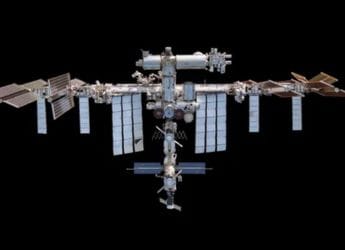- Home
- Science
- Science News
- This Battery Like Device Can Absorb Carbon Dioxide While Charging
This Battery-Like Device Can Absorb Carbon Dioxide While Charging
The battery-like device can take us a step further to solve the carbon dioxide emission problems in the present world.

Photo Credit: Gabriella Bocchetti/CAM UK
When the battery-like device discharges, it will release the CO2 in a controlled manner
Researchers at the University of Cambridge have designed a battery-like device that can take us a step further to solve the carbon dioxide emission problems in the present world. This supercapacitor device can selectively absorb CO2 during its charging process. When the battery-like device discharges, it will release the carbon dioxide in a controlled manner in such a way that can be collected to reuse or dispose of it later.
According to an article by EurekAlert, almost 35 billion tonnes of carbon dioxide are released into the atmosphere every year. Hence, the world is in need of urgent solutions to eliminate these emissions to solve the climate change problems.
There have been efforts in this direction, to control, capture, reuse and eliminate carbon emissions from the atmosphere. But the most advanced technologies, in this field, use a lot of energy and are highly expensive. The supercapacitor at the University of Cambridge is designed to capture and store carbon using low-cost technology.
The supercapacitor is as small as a coin. It is partly made using sustainable materials like coconut shells and seawater. Grace Mapstone, the co-author of the study, said, “The best part is that the materials used to make supercapacitors are cheap and abundant. The electrodes are made of carbon, which comes from waste coconut shells.”
Dr Alexander Forse from Cambridge's Yusuf Hamied Department of Chemistry led the research. He said, “We found that by slowly alternating the current between the plates we can capture double the amount of CO2 than before.” He added, “The charging-discharging process of our supercapacitor potentially uses less energy than the amine heating process used in industry now. Our next questions will involve investigating the precise mechanisms of CO2 capture and improving them. Then it will be a question of scaling up.”
The research, which has been published in the journal Nanoscale, describes the supercapacitor. It uses two electrodes of positive and negative charge. Unlike a rechargeable battery, it does not use chemical reactions to store energy. Instead, it stores energy by the movement of electrons between the electrode plates. This gives it a longer lifespan.
Grace Mapstone said, “We want to use materials that are inert, that don't harm environments, and that we need to dispose of less frequently. For example, the CO2 dissolves into a water-based electrolyte which is basically seawater.”
Catch the latest from the Consumer Electronics Show on Gadgets 360, at our CES 2026 hub.
Related Stories
- Samsung Galaxy Unpacked 2025
- ChatGPT
- Redmi Note 14 Pro+
- iPhone 16
- Apple Vision Pro
- Oneplus 12
- OnePlus Nord CE 3 Lite 5G
- iPhone 13
- Xiaomi 14 Pro
- Oppo Find N3
- Tecno Spark Go (2023)
- Realme V30
- Best Phones Under 25000
- Samsung Galaxy S24 Series
- Cryptocurrency
- iQoo 12
- Samsung Galaxy S24 Ultra
- Giottus
- Samsung Galaxy Z Flip 5
- Apple 'Scary Fast'
- Housefull 5
- GoPro Hero 12 Black Review
- Invincible Season 2
- JioGlass
- HD Ready TV
- Laptop Under 50000
- Smartwatch Under 10000
- Latest Mobile Phones
- Compare Phones
- Vivo Y500i
- OnePlus Turbo 6V
- OnePlus Turbo 6
- Itel Zeno 20 Max
- OPPO Reno 15 Pro Mini 5G
- Poco M8 Pro 5G
- Motorola Signature
- Vivo Y50e 5G
- Lenovo Yoga Slim 7x (2025)
- Lenovo Yoga Slim 7a
- Realme Pad 3
- OPPO Pad Air 5
- Xiaomi Watch 5
- Huawei Watch 10th Anniversary Edition
- Acerpure Nitro Z Series 100-inch QLED TV
- Samsung 43 Inch LED Ultra HD (4K) Smart TV (UA43UE81AFULXL)
- Asus ROG Ally
- Nintendo Switch Lite
- Haier 1.6 Ton 5 Star Inverter Split AC (HSU19G-MZAID5BN-INV)
- Haier 1.6 Ton 5 Star Inverter Split AC (HSU19G-MZAIM5BN-INV)

















